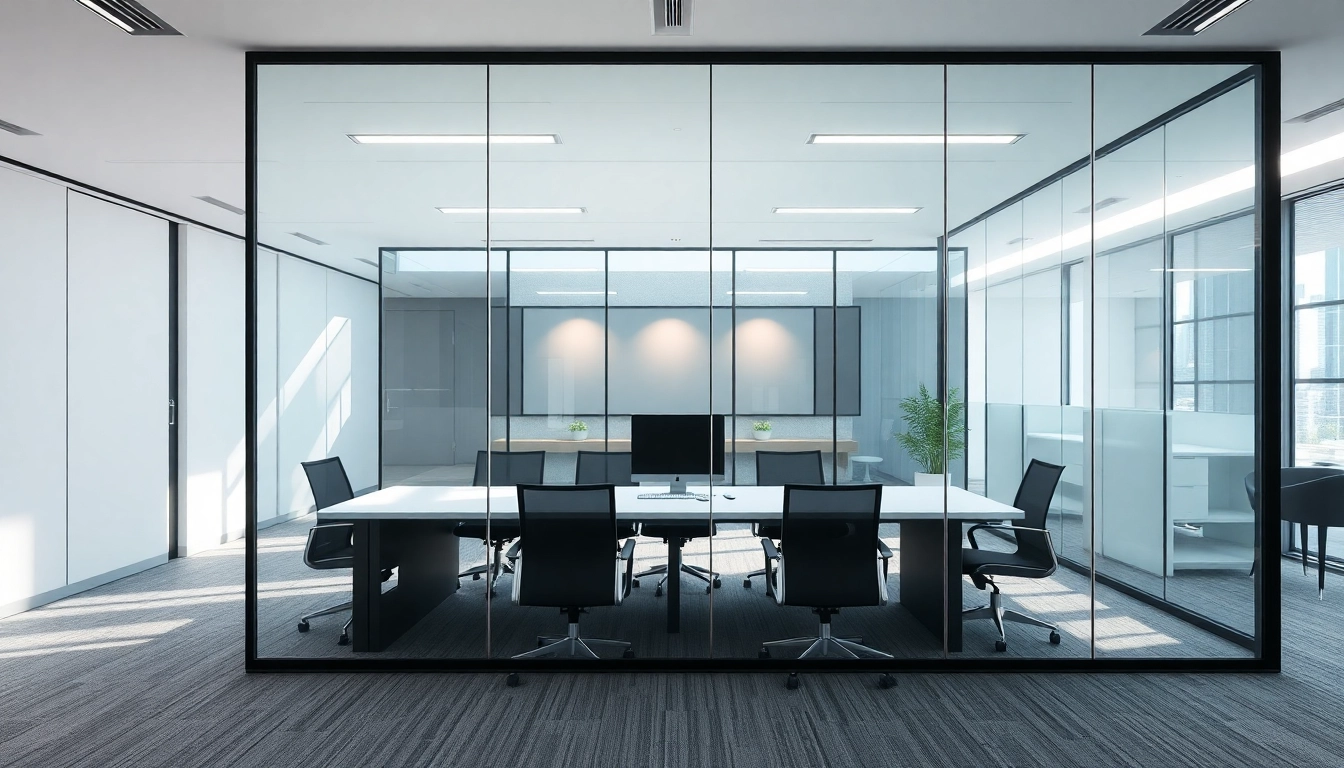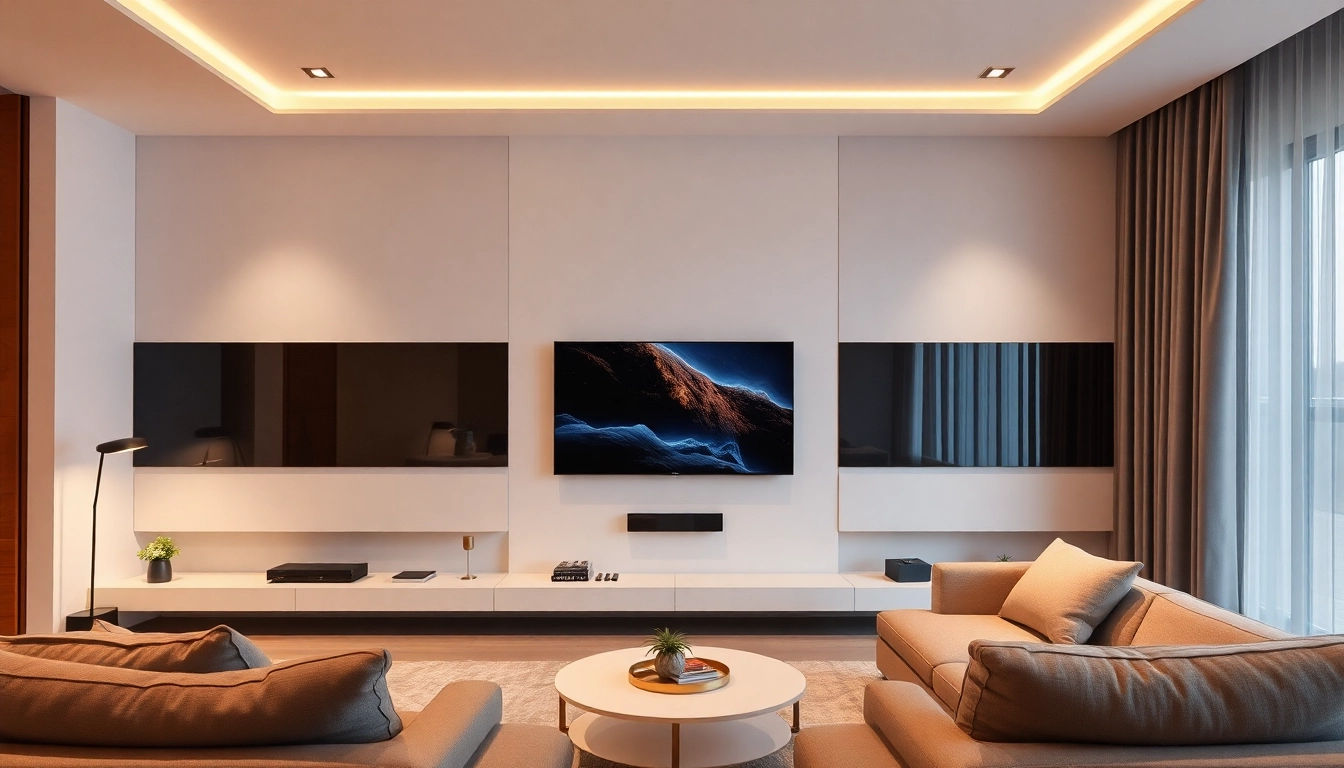Understanding Movable Glass Partitions
What Are Movable Glass Partitions?
Movable glass partitions are innovative architectural elements that provide flexible solutions for space management within various environments. Comprised of glass panels that can be operated easily, these partitions can be retracted or deployed to quickly alter the spatial layout of an area without significant renovations. They allow businesses, residential homes, and public spaces to modify their environment to suit different needs and occasions, thus enhancing aesthetic appeal and functionality.
By using movable glass partitions, organizations can enjoy greater versatility in their spaces, creating open, collaborative areas or private, focused sections as required. This adaptability makes them increasingly popular in modern design paradigms.
Key Benefits of Using Movable Glass Partitions
Movable glass partitions offer numerous benefits across different settings. Here are some key advantages:
- Versatility: These partitions can be easily moved to accommodate varying needs, allowing spaces to transform from open areas to private rooms seamlessly.
- Enhanced Aesthetics: Glass partitions introduce an element of sophistication and style, creating a feeling of openness and light while maintaining transparency.
- Sound Insulation: Many glass partitions are designed with sound-dampening technology, making them suitable for offices, meeting rooms, and other areas where noise control is crucial.
- Cost-Effective: Compared to traditional walls, movable glass partitions can be a more economical option for creating flexible spaces, reducing the need for extensive renovations in the future.
- Increased Natural Light: The transparency of glass allows natural light to flow through spaces, improving the ambiance and reducing energy costs associated with lighting.
Applications of Movable Glass Partitions in Various Industries
The adaptability of movable glass partitions makes them suitable for various sectors including:
- Corporate Offices: They create multipurpose meeting rooms, collaborative spaces, and private offices that can be reconfigured based on team needs.
- Retail Spaces: Retailers can use glass partitions to create flexible store layouts, facilitating dynamic promotions and seasonal displays.
- Healthcare Facilities: In hospitals and clinics, they can provide privacy for patients and flexible spaces for different types of consultations.
- Educational Institutions: In schools or universities, these partitions can create versatile classrooms and collaborative study lounges.
Types of Movable Glass Partitions
Framed vs. Frameless Movable Glass Partitions
Movable glass partitions are generally categorized into two types: framed and frameless. Framed versions have a visible frame around the glass panels, typically made of aluminum or steel, which provides additional stability and rigidity. They can offer a more traditional look and may come in a variety of finishes to complement the existing decor.
Frameless partitions, on the other hand, provide a sleek, modern appearance that maximizes transparency. The absence of frames creates an unobtrusive design that enhances the sense of space. This type of partition is often preferred in high-end commercial and residential spaces, where aesthetics play a crucial role.
Single vs. Double Glazed Options
Another consideration when choosing movable glass partitions is the glazing option. Single glazed partitions consist of a single pane of glass, making them lighter and more cost-effective. However, they provide less insulation and soundproofing compared to double glazed options.
Double glazed partitions consist of two panes of glass with a layer of air or gas between them. This design improves thermal and sound insulation, making it an ideal choice for environments where privacy and noise control are paramount, such as conference rooms and private offices.
Acoustic Performance of Movable Glass Partitions
The acoustic performance of movable glass partitions is critical, especially in open-plan offices and public spaces. Many modern partitions are designed with soundproofing capabilities, achieving high Sound Transmission Class (STC) ratings through the use of specialized materials and construction techniques.
Investing in acoustic movable glass partitions can result in enhanced productivity and comfort for employees and clients by minimizing distractions and creating a more conducive working environment. Understanding the required STC rating for your project will help guide your decisions in this area.
Design Considerations for Movable Glass Partitions
Choosing the Right Style and Finish
When designing spaces with movable glass partitions, selecting the appropriate style and finish is essential. The style should align with the overall architectural theme of the building. Different colors, textures, and materials can be used to either blend in with the interior design or create a striking contrast.
For instance, a minimalist design can be achieved with frameless glass panels that optimize natural light, while a more industrial theme may benefit from framed partitions featuring exposed metal finishes. Consideration of brand colors and corporate identity can also play a significant role in these design decisions.
Integrating Movable Glass Partitions into Open Spaces
Movable glass partitions offer unique possibilities in open space designs. They can be deployed as temporary barriers for events or daily office use, providing flexibility in spatial arrangements. Implementing these systems can allow businesses to maximize their real estate investment and create multifunctional spaces that can be adapted for different activities such as collaboration, presentations, or private meetings.
It is crucial to involve architects and designers early in the process to ensure smooth integration and functionality while adhering to safety and building codes.
Color and Texture Customization Options
Customization options play a significant role in the appeal of movable glass partitions. The available choices often extend beyond simple clear glass to include tinted, frosted, or textured options. These finishes not only enhance privacy but can also contribute to the aesthetic character of the space.
Frosted glass can provide discretion while allowing light to filter through, while patterned or printed textures can introduce visual interest. Additionally, the incorporation of smart glass technology offers further customization, enabling glass panels to change opacity on demand, enhancing privacy and energy efficiency.
Installation and Maintenance of Movable Glass Partitions
Steps for Proper Installation
The installation of movable glass partitions requires meticulous planning and execution to ensure optimal performance. Here are the general steps involved:
- Site Assessment: Evaluate the area where the partitions will be installed, measuring dimensions and identifying any existing structural elements that could affect the installation.
- Design Finalization: Work closely with your design team to finalize the partition design, finishes, and layout.
- Preparation: Prepare the site by clearing the area, ensuring all surfaces are stable and ready for installation.
- Installation: Follow the manufacturer’s instructions for assembly and installation, accounting for all components such as tracks, hardware, and glass panels.
- Testing: Conduct functionality tests to ensure smooth operation, checking for noise issues, stability, and proper sealing.
Regular Maintenance Tips
To ensure longevity and performance of movable glass partitions, regular maintenance is essential. Here are some tips to keep in mind:
- Conduct regular visual inspections to identify any cracks, chips, or hardware issues.
- Clean glass surfaces with appropriate glass cleaners to avoid streaks and build-up.
- Lubricate moving parts such as tracks and rollers to ensure smooth operation.
- Check seals and gaskets for wear and replace as necessary to ensure sound and thermal insulation.
Common Issues and Solutions with Movable Glass Partitions
Despite their many advantages, movable glass partitions can present challenges, including:
- Alignment Problems: Over time, partitions may become misaligned due to use. Regular checks and adjustments can help prevent performance issues.
- Noise Problems: If sound insulation is inadequate, consider evaluating the STC rating of the partition and upgrading to a different model if necessary.
- Glass Breakage: Glass can occasionally break due to impact or stress. Having a repair plan in place can help mitigate costs and downtime.
Future Trends in Movable Glass Partitions
Technological Innovations in Glass Partition Systems
The future of movable glass partitions is bright, with numerous technological innovations on the horizon. One significant trend involves integration with smart technology, allowing users to control partitions remotely. Features such as automatic opening and closing, integrated lighting, and multimedia capabilities are being developed, enhancing the functionality of these systems.
Furthermore, advancements in glass technology, such as electrochromic and photochromic glass, offer exciting possibilities for optimizing light, energy consumption, and privacy control on demand.
Eco-Friendly Materials for Sustainable Design
As sustainability becomes an increasingly important focus, eco-friendly materials are being integrated into the design of movable glass partitions. Manufacturers are exploring options such as recycled glass and sustainable framing materials, reducing the overall environmental impact of these products.
Additionally, creating designs that allow for better energy efficiency can contribute to a building’s overall sustainability ratings, aligning with green building certifications like LEED (Leadership in Energy and Environmental Design).
Predicted Market Growth and Demands
The market for movable glass partitions is expected to continue growing significantly, driven by increasing urbanization and the demand for adaptable spaces in commercial and residential sectors. As more businesses recognize the advantages of flexible layouts and open-concept designs, the need for movable glass partitions will only intensify.
Industry experts predict that innovations in design and technology will play a central role in shaping future offerings, ensuring that these systems meet evolving consumer expectations while remaining aesthetically pleasing and functional.



